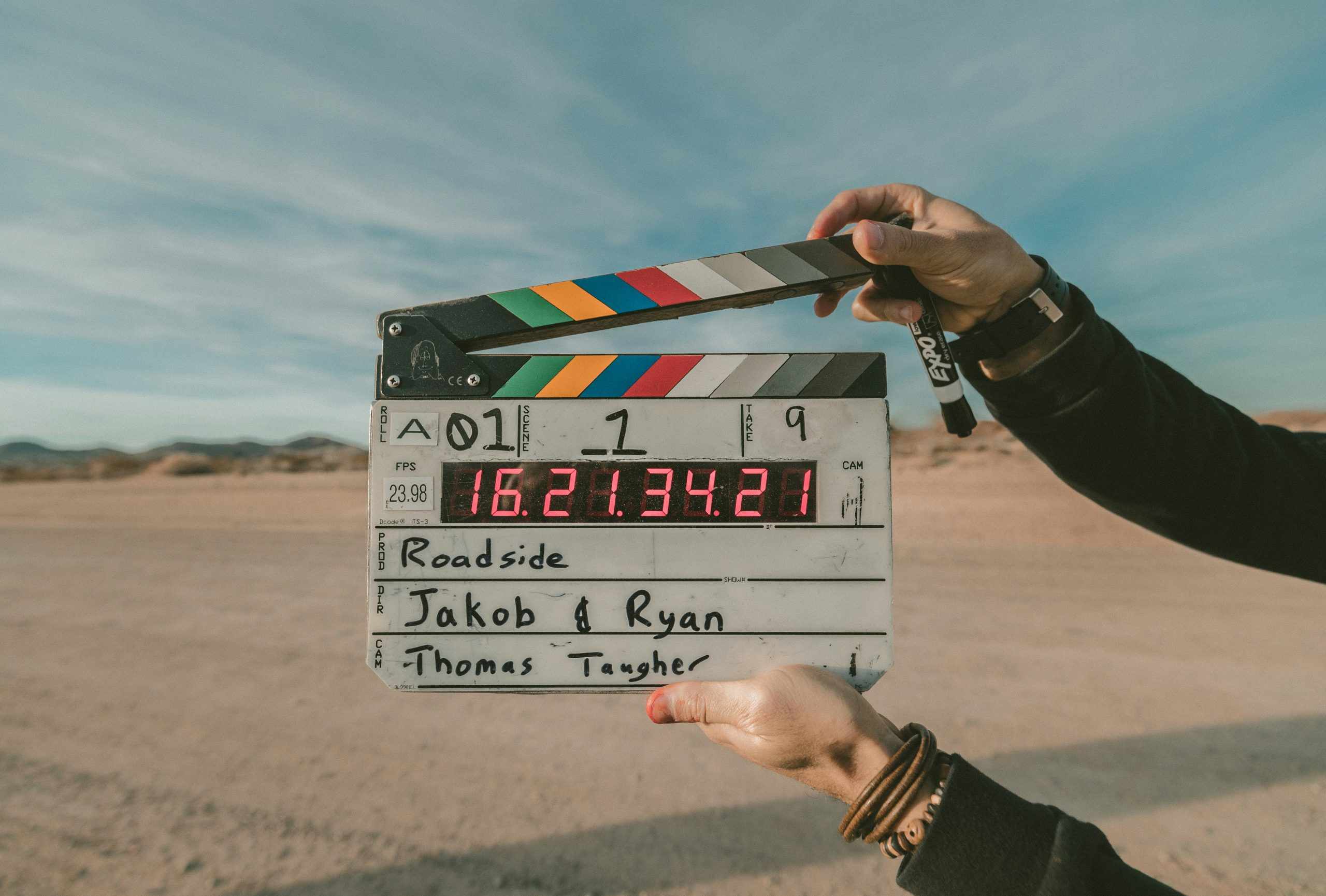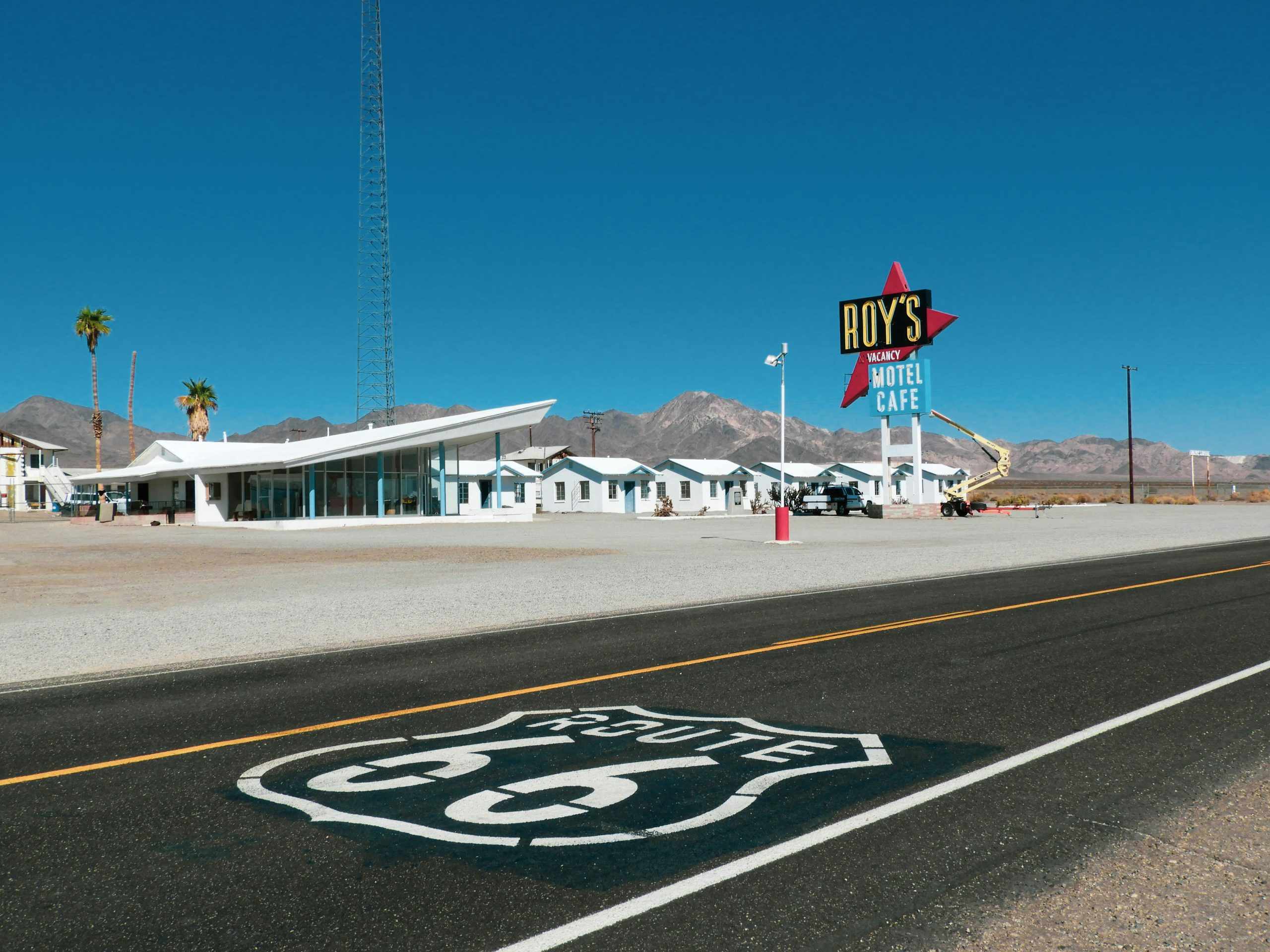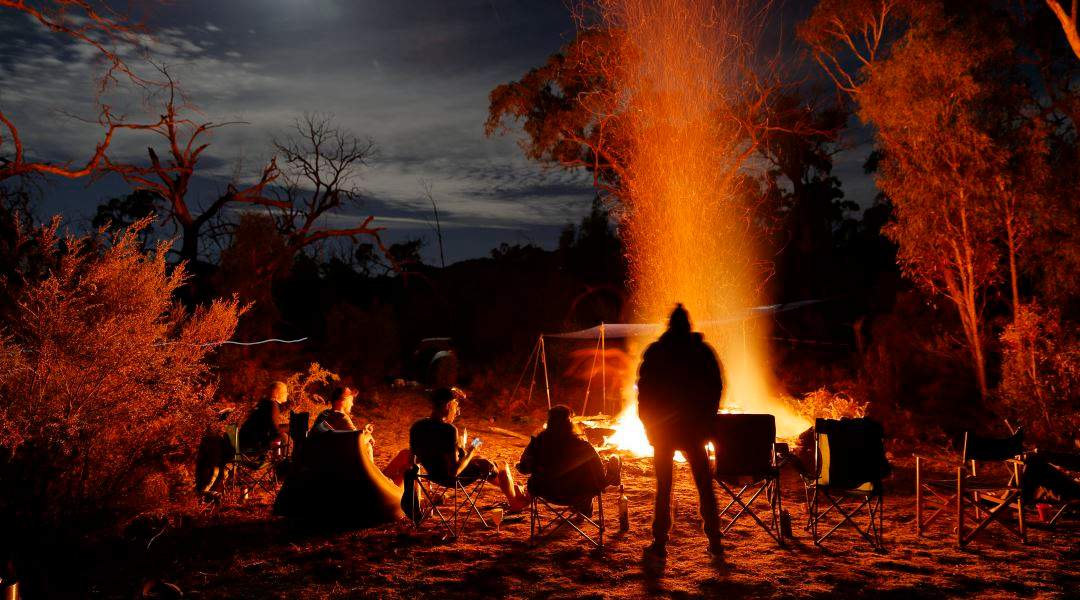Making a fire is one of the most ancient technologies of human civilization. We may no longer need to know this skill for survival, especially not when you are camping in an RV, but it’s still mighty handy for enjoying a night of hot dogs, toasted marshmallows, and good conversation by the fire.
Wilderness fire-starting kits like this one are worthy companions to help your fire-making wherever you roll.
And before we get rolling on campfire making – check out our outdoor rec store to stock up on all the goodies you’ll need to make camp.
Then, get cozy, grab yourself a hot chocolate, and let’s take a look at how to build a campfire.
Overview
Here are the elements you need to build a great campfire.
- Containment: To keep the fire where you want it
- Ignition: Matches, sparks, lighter, etc.
- Tinder: Some easy-to-ignite fuel source
- Fuel: Long-lasting fuel in the form of dry wood
- Airflow: To bring oxygen into the fire
Containment
You must keep your fire under control at all times. You don’t want to burn yourself, your property, or start a wildfire. This is a serious responsibility, so don’t ignore it. Here are some basic rules to keep in mind:
- If your site has a pre-made fire pit or fire box, use it (or bring along a portable fire pit).
- Ensure there are no branches, awnings, or other flammable things within 20 feet of your fire.
- Clear all flammable vegetation within 5 feet of your fire, especially dried or brown grasses.
- Put a physical barrier around the base of the fire to prevent burning logs from rolling out of it. A ring of stones or metal is ideal.
- Try to shelter your fire from strong, direct wind.
- Never leave your campfire unattended. You are the last line of defense for containment.

Ignition
Ignition is what you start your fire with. Fire is a chemical reaction that takes carbon-based fuel and combines it with oxygen from the air to make heat and light. Once underway, the energy released as heat keeps the reaction going. But to get it started, you need an ignition source. The following are easy, reliable, and safe.
Lighter wand: We’d be surprised if you don’t already own one. They are easy to use, very reliable, and safe so long as you don’t drop them in the fire or break them.
Long matches: Fireplace matches are great for lighting tinder, both due to the reach, and because they burn for a while before going out.
Storm matches: These are pretty crazy seeing as how they can burn underwater. If you are the rugged sort, they can be hard to resist.
Spark striker: If you want to go chemical-free, a good spark striker will work in nearly any weather and has no chance of catching on fire itself—it’s just a bit harder to get the fire where you want it.
Tinder
Tinder is a fuel that’s easy to ignite. It doesn’t burn long, but its job is to make enough heat to get your main fuel source ignited. With a big log, you need a lot of energy to get it to start burning. Tinder takes less energy, so it’s like a stepping stone to the big stuff. You have many options for what to use as tinder.
Natural tinder: You are looking for plant matter that is dry, light, and has lots of surface area. Completely dried grass or leaves work well too. Pine cones, wood shavings from dry wood, and natural cotton fluff are also great options. You’ll want to have a pretty good-sized bundle as you want it to both catch fire quickly and burn long enough to light larger material.
Camp-lamp: If you have some paper towels or napkins and some cooking oil, you can make a camp-lamp. Crumple the paper up into a ball and soak it in vegetable oil. When you light, light the top and it acts like a lamp wick, burning the high energy oil.
Fire starters: There are many different types and brands of these, but most are a mix of wax and wood. The biggest advantage is they burn a long time and can be used to ignite pretty hefty logs and such. The only downside is the wax makes them a bit smokey.
What about newspapers and magazines, you ask? Well, they can do the job in a pinch, but they just don’t burn very long and thus don’t make ideal tinder material. They also tend to make a lot of light ash that can be a danger in starting wildfires or lighting your awning ablaze. They also have ink that you might not want in any food you roast over the fire. Overall, not recommended.
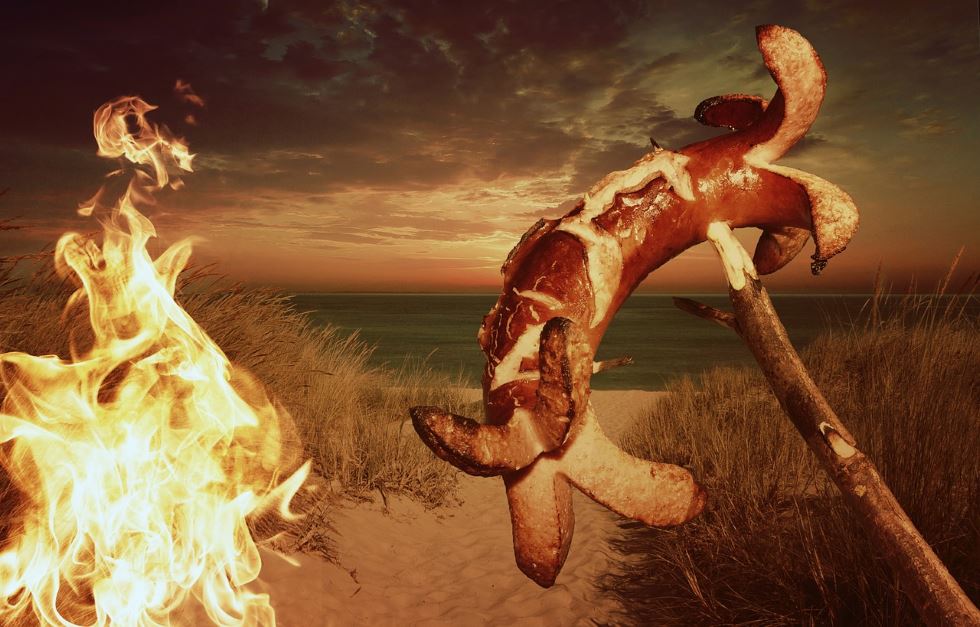
Wood / Fuel
Good firewood goes a long way to making a good campfire. Whether you buy wood or collect it yourself, here is what you’re looking for in good wood for a fire.
- Dry: Water in wood sucks up heat like a sponge and this makes it much harder to burn. The easiest ways to identify dry wood is that a) it weighs less than wet wood, and b) it has a higher pitch tone when you strike it. It also breaks and snaps rather than bends.
- Clean: Really dry bark burns nicely, but most bark soaks up water and thus burns poorly. Dirt and such also doesn’t burn so well and tend to be moist. Obviously, don’t clean wood with water! Use a brush or knife to get the wood clean.
- Size: You want different-sized pieces of wood, from smallish sticks up to hefty logs. If all your wood is jumbo sized, grab an ax and chop off some smaller pieces to stage up your fire with. Smaller pieces are called kindling. The bigger the wood, the more energy it takes to get it lit.
Word to the wise: If you decide to collect wood yourself, be sure you know the rules for the location you’re in. Collecting dead kindling and branches is generally fine, so long as it’s not connected to a living tree—but a few places don’t allow collection. If you buy wood, try to buy it as close to where you’ll use it as possible to avoid spreading wood-eating parasites from one place to another.
Airflow
Much like you, a fire needs to breathe. It takes in oxygen from fresh air and spits out carbon dioxide and water vapor. The hot exhaust air rises and the fresh air comes in from the bottom of the fire. The main consideration here is that you want to have clear channels for fresh air to get sucked into the fire. The pathway doesn’t need to be large, but it does need to be clear and direct.
So, if setting up a fire ring, put it a foot or so away from the fire itself or leave a gap of some kind for air to flow through to the heart of the fire.

Laying the fire
Laying the fire is the process of arranging all the elements you have gathered before starting the blaze. There are lots of ways to do this, but they all have some a common theme: Tinder is used to light kindling and kindling is used to light the main fuel. Also, all of them leave open space for the fire to breathe in at the bottom and out at the top. Let’s look at two classics.
The Tee Pee
Your tinder goes at the center or the fire pit. Your kindling sticks are arranged in a cone, over the tinder. You want to leave a “door” or opening in the kindling so you can light the tinder and ensure good air flow. Then arrange larger sticks in a cone over the kindling. You light the tinder, which burns into the kindling, which then burns into the larger wood.
The Tee Pee is easiest to do when you have natural branches for kindling, as the stems and such make them easy to interlock at the top of the cone. Cut lumber is harder to stack this way—although it is possible.

The Pyramid / Log Cabin
Your tinder goes in the center of the fire pit. If you have some kindling, you can cone it around the tinder. You want two of your larger logs to sit on either side of the tinder a couple of inches from it. Then you build a pyramid or cabin of increasingly smaller logs on the first two, every two logs alternate directions. You want it such that they fire from the tinder and kindling burn up into the higher logs. You can stick kindling in, vertical to the pyramid if you find it difficult to cone it.
This formation is a little easier to build, especially with cut lumber. It is also easier to add wood to the fire without crushing the center of the fire as the two base logs tend to only get half burned and remain as supports for logs to go on.
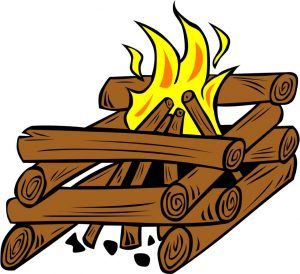
Stoking the Fire
As your fire is getting started, or if it starts to die out, you may want to stoke the fire by getting extra air into it. The easiest way to do this is with some kind of hand-held fan. A paper plate works just fine. Start small and work your way up in strength until you get the fire going. Too much and you can blow it out. You want to fan the fire from the bottom, not from the top. Fanning from the top blows the exhaust back into the fire, and that is going to smother it rather than feeding it.
Once your fire becomes mostly coals, you can stoke those pretty fiercely to get them blazing again. As you add wood to your fire to keep it going, remember not to block airflow to the base of the fire or smother the coals that are in there. You want lots of pockets for air, especially at the heart of the fire.
Troubleshooting
Wind
A little bit of wind can be helpful in stoking your fire, but a lot of wind can easily blow it out by pushing the exhaust into the fire or by simply blowing out the flame. Your first line of defense is to build your fire somewhere that’s sheltered from the direct wind. Your next best bet is to try the Lean-To fire lay.
In this lay, you set your biggest log onto your fire pit to act as a windbreaker. You can dig down a bit on the leeward side of it to further the effect. Then, you put your tinder in the shelter of the log and lay kindling over that like a lean-to roof. As the fire develops, put larger pieces of wood on the “roof.”

Wet ground
Wet ground eats up energy and makes it harder to start a fire. The easiest thing to do is to put down a bed of kindling on which to build your usual fire lay. It takes more wood, but it also makes for a nice bed of coals as the fire progresses.
It just won’t light
More than likely, your problem is either that you don’t have enough tinder or enough kindling, or you are working with some wet wood. The solution is generally to get more tinder, more kindling, and dryer wood. If it does light, but goes out very quickly, then your problem is more likely to be insufficient airflow. Make sure there’s a way for air to come in at the bottom, and go out at the top.
Safety reminders
- Completely douse your campfire after you are done. Drizzle slowly and stir the water into the ash.
- Never leave your campfire unattended.
- Don’t wear loose clothing around the campfire.
- Keep a source of water on hand for emergencies.
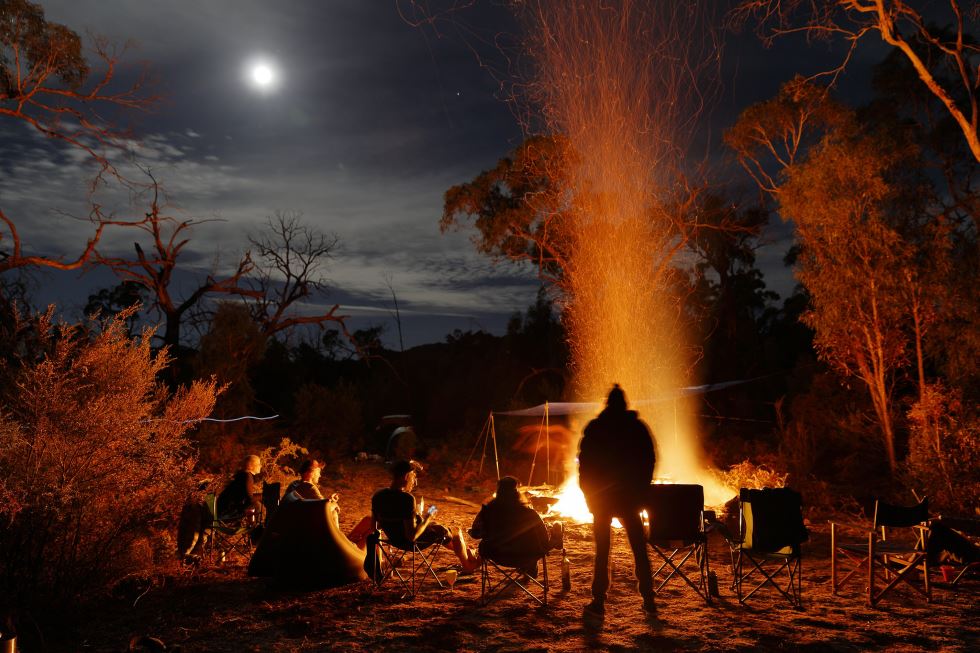
Are you ready to make the campfire of your dreams? Pick a destination and rent a great RV on Outdoorsy today.
